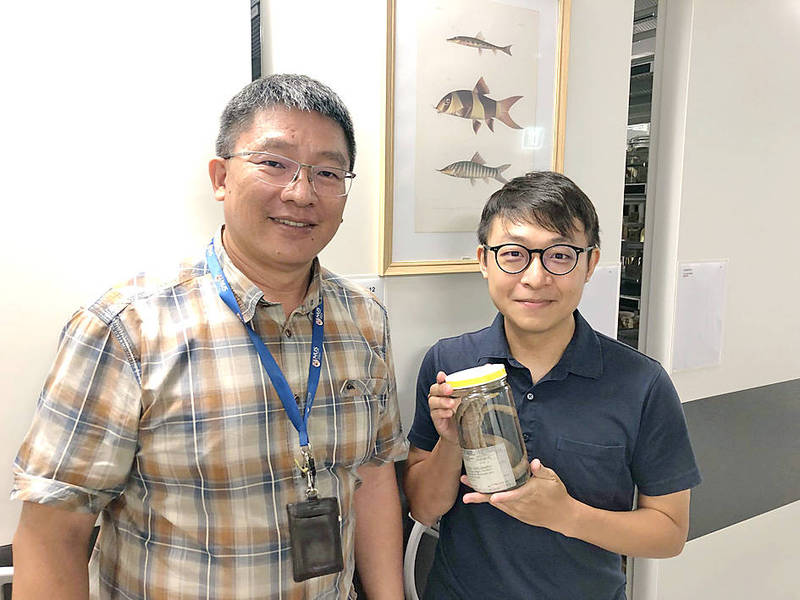《TAIPEI TIMES》 Researchers find new moray species in unique setting

National Sun Yat-sen University doctoral student Huang Wen-chien, right, holds a jar containing a specimen alongside National University of Singapore researcher Tan Heok Hui in an undated photograph. Photo courtesy of National Sun Yat-sen University
/ Staff writer, with CNA
A new species of moray eel has been discovered through the efforts of a professor and doctoral student at National Sun Yat-sen University (NSYSU), and a National University of Singapore researcher.
Liao Te-yu (廖德裕), a professor in NSYSU’s Department of Oceanography, and Huang Wen-chien (黃文謙), a student at the university in Kaohsiung, worked alongside Tan Heok Hui (陳旭輝) of the Singaporean institution’s Lee Kong Chian Natural History Museum to identify the new species, Uropterygius cyamommatus, NSYSU said in a statement on Monday.
The uniformly brown morays are notable for their beady eyes, the researchers said, adding that they are the first to be discovered in anchialine caves.
An anchialine system is where a landlocked body of water is connected to the sea via subterranean channels.
The eels are unique because morays are typically salt-water animals, while the caves they were found in were of such low salinity that they can be considered freshwater environments, the researchers said in a paper titled “Uropterygius cyamommatus, a new moray eel from anchialine caves in Christmas Island, Australia, and Panglao Island, the Philippines” published in the Raffles Bulletin of Zoology journal on March 29.
The work was conducted using baited traps in two limestone caves on Christmas Island and one on Panglao in Bohol Province, the researchers said.
The traps were set in water less than 2m deep through terrestrial openings of caves, they said.
Nine specimens were recovered, they said, adding that they were smaller than others from the genus and had more vertebrae.
Two of the nine were born without eyes on the left side of their heads, the researchers said.
Their small eyes, which on average were 3 to 4.6 percent of head length — and at times lack of eyes — indicate that the species has adapted to low-light environments, as many cave-dwelling aquatic creatures do, they said.
However, there were no significant changes to the cranial structure of the orbital region in the specimens that lacked eyes, they said.
The findings were published in the journal Science on May 18, with other publications expected to print the research soon.
新聞來源:TAIPEI TIMES

















